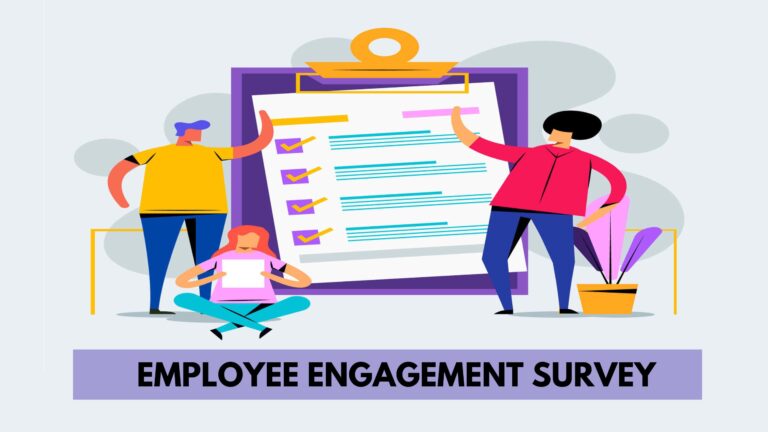Employee wellness programs have become a cornerstone of modern workplaces. These programs aim to promote employees’ physical, mental, and emotional well-being, resulting in healthier, happier, and more productive teams.
Health and wellness initiatives, such as vaccination clinics and employee wellness programs, are designed to address various dimensions of health, emphasizing a holistic approach to wellness within organizations.
In India, the demand for such initiatives has grown, particularly as employees face rising stress levels, long working hours, and the need for a work-life balance.
Implementing a well-designed wellness program is a good idea and a strategic necessity. It reduces absenteeism, enhances employee engagement, and contributes to long-term retention. This article will guide Indian businesses in building an effective employee wellness program that caters to the diverse needs of their workforce.
Understanding Employee Wellness
Employee wellness refers to health and wellness initiatives aimed at improving the overall well-being of employees. It encompasses various dimensions, such as:
- Physical Wellness: Promoting healthy habits, fitness, and preventive care.
- Mental Wellness: Addressing stress, anxiety, and work-related burnout.
- Emotional Wellness: Encouraging positive relationships and emotional resilience.
- Social Wellness: Fostering community and belonging in the workplace.
- Financial Wellness: Helping employees manage their finances better to reduce financial stress.
What is Employee Wellness?
Employee wellness refers to the overall physical, mental, and emotional well-being of employees in the workplace. It encompasses a range of factors, including physical health, mental health, stress management, work-life balance, and social connections.
Employee wellness is essential for maintaining a healthy and productive workforce, and it has a direct impact on job satisfaction, employee engagement, and overall business performance.
In the workplace, employee wellness programs aim to create an environment that supports the well-being of employees. This includes initiatives that promote healthy habits, provide mental health resources, and encourage a sense of community. By prioritizing employee wellness, organizations can foster a positive work culture, reduce absenteeism, and enhance overall productivity.
Benefits of Employee Wellness Programs
Each and every employee wellness program aims to elevate the quality of life of the organization’s staff. This includes enjoying the advantages that the policies bring to the workplace.
- Increased Productivity: Health and wellness initiatives, such as vaccination clinics and employee wellness programs, help create healthy employees who are more focused and efficient.
- Reduced Absenteeism: Wellness programs help lower health-related absences.
- Enhanced Employee Engagement: Employees feel valued when their well-being is prioritized.
- Better Retention: A supportive work environment reduces turnover rates.
- Positive Employer Branding: Companies with wellness programs are attractive to top talent.

Steps to Build an Employee Wellness Program
To create an an effective employee wellness program, it is important to focus not only on the needs of the workplace but also of the employee and those close to them.
Assess Employee Needs
Start by understanding what your employees want and need in a wellness program.
- Conduct Surveys: Use anonymous questionnaires to gather input on wellness preferences.
- Analyze Trends: Look at absenteeism patterns or common health concerns among employees.
- Consider Demographics: In India, wellness needs may vary based on age, location, or lifestyle. For example, urban employees may prefer fitness programs, while rural employees might value access to healthcare.
Set Clear Goals
Define what you want to achieve with the wellness program. Having a clear vision allows you to create an effective path that takes the needs of the employees and the employers into consideration.
- Examples of goals include reducing sick days by 10%, improving employee satisfaction scores, or increasing participation in wellness activities.
- Align the program’s objectives with your company’s values and culture.
Design a Holistic Wellness Plan
Any good wellness program ensures to provide solutions to issues that may vary from physical ailments to mental health. A comprehensive plan should address these multiple aspects of health and wellness:
Physical Wellness:
- Provide on-site fitness facilities or subsidized gym memberships.
- Organize health check-ups and vaccination drives.
- Promote healthy eating by offering nutritious snacks in the cafeteria.
Mental Wellness:
- Partner with mental health professionals to offer counseling services.
- Encourage stress-relief activities like meditation or yoga.
- Provide training on managing work-related stress.
Financial Wellness:
- Offer financial literacy workshops on saving, investing, and budgeting.
- Introduce salary advance options to reduce financial strain.
Work-Life Balance:
- Implement flexible working hours or remote work policies.
- Encourage employees to take regular breaks and vacations.
Involve Leadership
Leadership support is crucial for the success of any wellness program. It encourages employees to take part in the programs while highlighting the care that the leaders have for their team.
- Educate managers about the importance of wellness and train them to identify signs of burnout or stress.
- Encourage senior leaders to participate in wellness initiatives to set an example.
Establish a Wellness Committee or Team
Establishing a wellness committee or team is a crucial step in developing a successful employee wellness program. This team should comprise representatives from various departments and levels within the organization, including HR, management, and employees.
The committee’s primary responsibility is to design, implement, and evaluate the wellness program, ensuring that it meets the unique needs and goals of the organization.
The wellness committee plays a vital role in promoting the wellness program and encouraging employee participation. By involving employees in the planning and decision-making process, the committee can create a sense of ownership and commitment to the program.
Additionally, the committee can gather feedback and make necessary adjustments to keep the program relevant and effective.
Use Technology
With the ever-evolving world of technology, the ability to provide wellness solutions to employees is getting better by the day. Leverage technology to make your wellness program accessible and engaging:
- Use wellness apps to track fitness, sleep, and nutrition goals.
- Implement HR software for seamless scheduling of health-related activities.
- Encourage participation through gamification—reward points or badges for achieving wellness milestones.
Popular platforms in India, like Cure.fit or HealthifyMe, can be integrated into your program.
Provide Incentives
Motivate employees to participate by offering rewards:
- Offer gift vouchers, additional time off, or wellness-related perks like spa vouchers.
- Recognize participants publicly to boost morale.
Communicate Effectively
A great program is of no use if employees are unaware of it.
- Use email campaigns, posters, and team meetings to share details.
- Highlight success stories to encourage more participation.
Monitor and Evaluate
Track the program’s effectiveness using metrics like:
- Participation rates in wellness activities.
- Reduction in absenteeism.
- Improvement in employee engagement survey scores.
Collect feedback regularly and make adjustments to keep the program relevant.
Implementing Program Initiatives
Implementing program initiatives is a critical step in launching a successful employee wellness program. This involves developing and implementing a range of activities, services, and resources that promote employee well-being, such as:
Physical Wellness Initiatives
Organize fitness challenges, provide access to gym facilities, and offer health screenings. Ensure that the program take pre-existing medical conditions into consideration and offer varied opportunities that everyone can enjoy.
Mental Wellness Initiatives
Offer counseling services, conduct stress management workshops, and provide mindfulness programs. Provide a safe space for employees to voice their concerns and relieve their stress without jeopardizing their workplace connections.
Work-Life Balance Initiatives
Implement flexible working hours, encourage regular breaks, and promote vacation time. Having a proper balance between the work life and off time can do wonders for productivity.
Social Wellness Initiatives
Foster team-building activities, create social clubs, and organize community service events. Encourage group projects and provide opportunities for employees to freely mingle with each other in a professional manner.
By offering a variety of wellness initiatives, organizations can address the diverse needs of their employees and create a supportive and engaging work environment.
Mental Health Resources and Support
Mental health resources and support are essential components of a comprehensive employee wellness program. This may include:
Access to Counseling Services or Employee Assistance Programs (EAPs)
Providing employees with access to professional counseling services can help them manage stress, anxiety, and other mental health challenges.
Mental Health Workshops or Training Sessions
Conducting workshops and training sessions on mental health topics can raise awareness and provide employees with valuable coping strategies.
Stress Management Techniques and Resources
Offering resources such as stress management techniques, relaxation exercises, and time management tools can help employees manage their stress levels.
Mindfulness and Meditation Programs
Implementing mindfulness and meditation programs can promote mental well-being and reduce stress. It can also help employees in organizing their thoughts and channel them in a productive manner.
Online Mental Health Resources and Tools
Providing access to online resources and tools can offer employees additional support and information on mental health topics.
By providing mental health resources and support, organizations can help employees manage stress, anxiety, and other related challenges, promoting a healthier and more productive workforce.
Low-Cost Wellness Program Ideas for Indian Businesses
- Walking Meetings: Encourage physical activity during discussions.
- Mental Health Days: Allow employees to take time off to recharge.
- Health Challenges: Organize team fitness challenges with small rewards.
- Stress-Free Zones: Create dedicated spaces for relaxation in the office.
- Educational Sessions: Host free nutrition, mindfulness, or personal finance workshops to promote health and well-being initiatives.
Cultural Considerations for Indian Workplaces
In India, wellness programs should be culturally sensitive and focus on health and well-being initiatives:
- Celebrate festivals like Diwali or Holi with wellness activities, such as organizing a healthy cooking competition.
- Provide services in regional languages to ensure inclusivity.
- Address common health concerns like diabetes or hypertension, which are prevalent in Indian populations.
Challenges in Implementing Wellness Programs
- Budget Constraints: Small businesses may struggle with costs.
- Low Participation: Employees may hesitate to engage, especially if they perceive wellness activities as a waste of time.
- Diverse Needs: Catering to a multi-generational workforce can be challenging.
To overcome these challenges, start small and build the program gradually, ensuring it aligns with employee expectations. Promoting health and wellness initiatives, such as vaccination clinics and employee wellness programs, can address various dimensions of health and well-being, emphasizing a holistic approach to wellness within organizations.
Conclusion
Building an effective employee wellness program is an investment in your workforce. Organizations can create a healthier and more motivated workplace by addressing employees’ physical, mental, and emotional needs through health and wellness initiatives.
A thoughtfully designed wellness program can be a game-changer in India, where work-life balance and stress management are growing concerns. Remember, the key to success is understanding employee needs, promoting engagement, and continuously improving the program.






